Flowers
Flowers are the reproductive structures found in flowering plants, also known as angiosperms. They are essential for the plant's reproductive process and come in a wide variety of shapes, sizes, and colors.
Structure of a Flower
A typical flower consists of several parts:
- Petal: The colorful, often scented part of the flower that attracts pollinators.
- Stamen: The male reproductive organ of the flower, consisting of the anther and filament.
- Carpel: The female reproductive organ of the flower, consisting of the stigma, style, and ovary.
- Sepal: The outermost part of the flower, usually green in color, and protects the flower during its bud stage.
Functions of Flowers
Flowers serve several important functions:
- Reproduction: Flowers are the site of sexual reproduction in plants, where pollen is transferred from the stamen to the carpel for fertilization.
- Pollination: Pollinators such as bees, butterflies, and birds are attracted to flowers by their colors and scents, and unwittingly aid in the transfer of pollen.
- Seed Formation: After fertilization, the ovary of the flower develops into a fruit containing seeds, ensuring the continuation of the plant species.
Types of Flowers
There are various types of flowers based on their structure and reproductive mechanisms:
- Complete Flowers: These flowers contain all four main parts - petals, stamens, carpels, and sepals.
- Incomplete Flowers: Flowers lacking one or more of the main parts, either stamens, carpels, or petals.
- Perfect Flowers: Flowers containing both stamens and carpels, capable of self-pollination.
- Imperfect Flowers: Flowers with either stamens or carpels, requiring cross-pollination from other flowers of the same species.
Fun Facts about Flowers
Here are some interesting facts about flowers:
- Largest Flower: The Rafflesia arnoldii, also known as the "corpse flower," is the world's largest flower and can grow up to 3 feet in diameter.
- Oldest Flower: The Montsechia vidalii, a water lily, is believed to be the world's oldest flower, dating back over 130 million years.
- Flower Symbolism: Different flowers hold symbolic meanings, such as roses representing love and daisies symbolizing innocence.
Study Guide
Here are some key points to remember about flowers:
- Define the main parts of a flower and their functions.
- Explain the process of pollination and its importance for plant reproduction.
- Identify the types of flowers based on their structure and reproductive mechanisms.
- Discuss the role of flowers in the formation of fruits and seeds.
- Explore the significance of flowers in different cultures and traditions.
Remember to observe and appreciate the beauty and diversity of flowers in nature!
[Flowers] Related Worksheets and Study Guides:
.◂Science Worksheets and Study Guides Third Grade. Grouping of Animals
Study Guide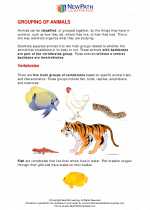 Grouping of Animals
Grouping of Animals  Activity Lesson
Activity Lesson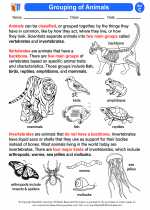 Grouping of Animals
Grouping of Animals  Worksheet/Answer key
Worksheet/Answer key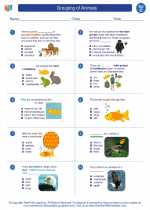 Grouping of Animals
Grouping of Animals  Worksheet/Answer key
Worksheet/Answer key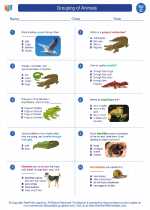 Grouping of Animals
Grouping of Animals  Worksheet/Answer key
Worksheet/Answer key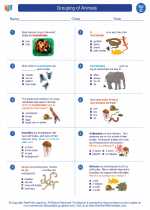 Grouping of Animals
Grouping of Animals  Worksheet/Answer key
Worksheet/Answer key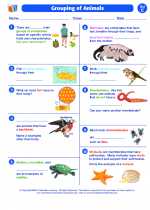 Grouping of Animals
Grouping of Animals  Vocabulary/Answer key
Vocabulary/Answer key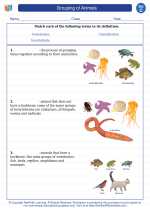 Grouping of Animals
Grouping of Animals 

 Activity Lesson
Activity Lesson
 Worksheet/Answer key
Worksheet/Answer key
 Worksheet/Answer key
Worksheet/Answer key
 Worksheet/Answer key
Worksheet/Answer key
 Worksheet/Answer key
Worksheet/Answer key
 Vocabulary/Answer key
Vocabulary/Answer key

The resources above cover the following skills:
LIFE SCIENCE
From Molecules to Organisms: Structures and Processes
Create representations to explain the unique and diverse life cycles of organisms other than humans (e.g., flowering plants, frogs, butterflies), including commonalities such as birth, growth, reproduction, and death.